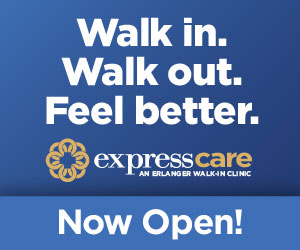Hispanics or Latinos are the largest racial/ethnic minority population in the US and, although life expectancy and overall health have increased over the years for most Americans, some chronic diseases and conditions continue to disproportionately affect Hispanic and Latino communities.
Hispanics/Latinos are about 50% more likely to die from liver disease or diabetes than non-Hispanic whites and are 22% less likely to have control over their blood pressure. They also have a higher proportion of both children and adults with obesity and are almost 3 times as likely to be uninsured as non-Hispanic whites.
But Hispanic Heritage Month, celebrated each year from September 15 to October 15, gives us the chance to address these disparities. Read on to learn how you can take steps to begin to improve your health this month!
Taking charge of your health
- Healthy choices. The easiest way to improve health starts with the basics: drink plenty of water, eat fruits and vegetables every day, and limit intake of sugary beverages, fried foods, and foods with lots of sodium.
- Stay active. Daily physical activity improves your overall health and is especially beneficial for the cardiovascular system – your heart, lungs, and circulation. Just 30 minutes of moderate intensity exercise (such as a brisk walk) five days a week can reduce your chance of heart disease and premature death.
- Sleep and stress-reduction. Stress is a major contributor to a number of health issues and, while some stressors can’t be avoided, getting enough sleep can help protect you against everyday stress. In addition to sleep, other stress-reducing activities such as yoga, meditation, walks in nature, or another favorite activity can help prevent stress from impacting your health.
- Stop smoking. Hispanic/Latino adults generally have lower prevalence of cigarette smoking and other tobacco use than other racial/ethnic groups, but cancer, heart disease, and stroke — all of which can be caused by cigarette smoking — are among the five leading causes of death among Hispanics.
- Limit alcohol intake. Alcohol directly impacts the health of the liver and Both Hispanic men and women have a chronic liver disease rate that is twice that of the non-Hispanic white population. First of all, if you don’t drink, don’t start. But if you do, drink moderately. Moderate alcohol consumption is defined as having up to 1 drink per day for women and up to 2 drinks per day for men.
Improving health outcomes in the community
In addition to lifestyle choices, social and economic factors also provide hurdles to Hispanic/Latino community health. Here are a few ways we’re addressing the health disparities of the Hispanic/Latino community at Erlanger.
- Access to health care. Erlanger’s community health centers provide primary and preventative medical, behavioral health, and dental care for the entire family regardless of ability to pay. Interpreter services, transportation assistance, and telehealth options are also in place system-wide to make our services even more accessible.
- Support for breastfeeding mothers. According to the CDC, breastfed babies have a lower risk of health problems later in life such as asthma, childhood leukemia, obesity, and type 2 diabetes. Additionally, breastfeeding can help lower the risk of future health problems for mothers including type 2 diabetes, certain types of breast cancer, and ovarian cancer.
- Improving access to life-saving screenings such as colorectal screenings, lung cancer screenings, and mammograms at all of our hospitals – including those in rural areas – ensures that everyone has the opportunity to detect and treat diseases at an early stage.
Erlanger’s three Community Health Centers offer affordable, accessible, high-quality medical, behavioral health, and dental care and two full-time Spanish interpreters at Dodson Avenue and Southside locations as well as Spanish-speaking providers at Southside, Premier Health, and Dodson locations. Same day appointments and telemedicine visits are available. Learn more about our three locations here.







